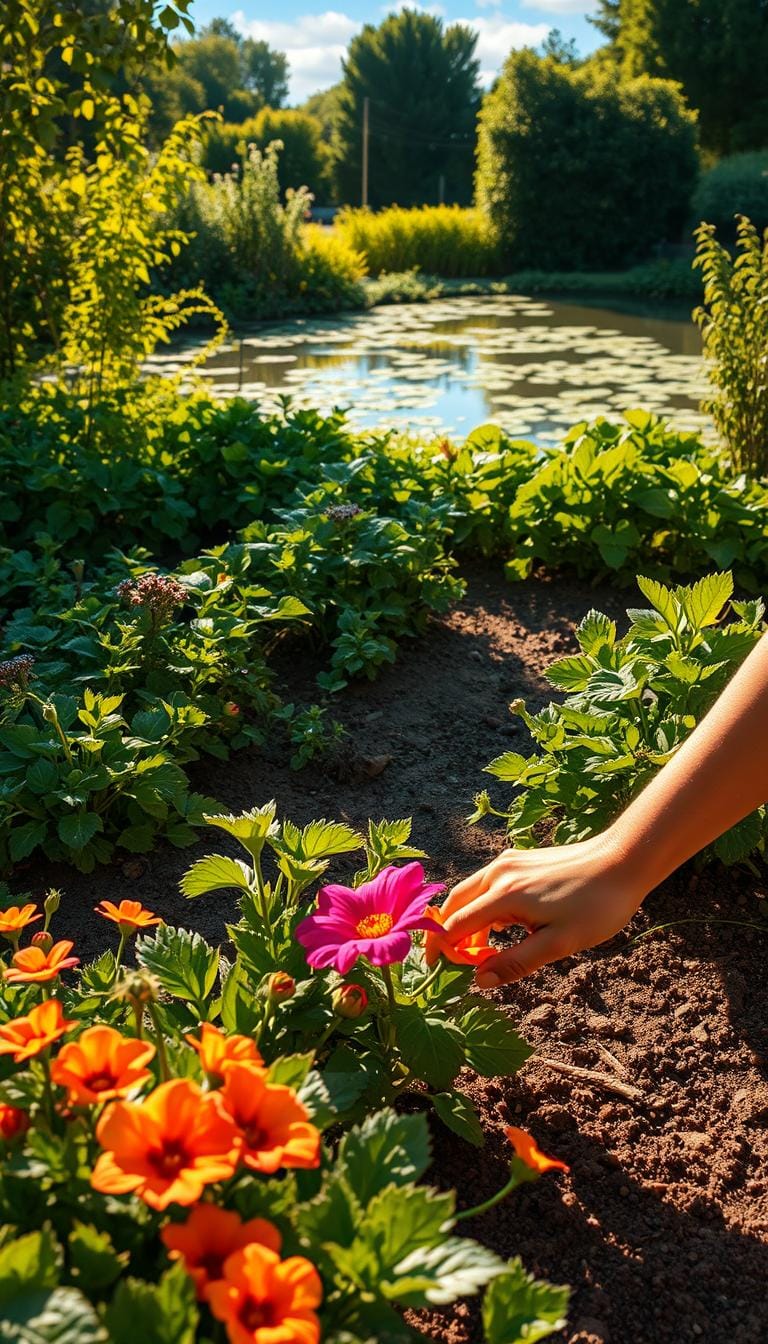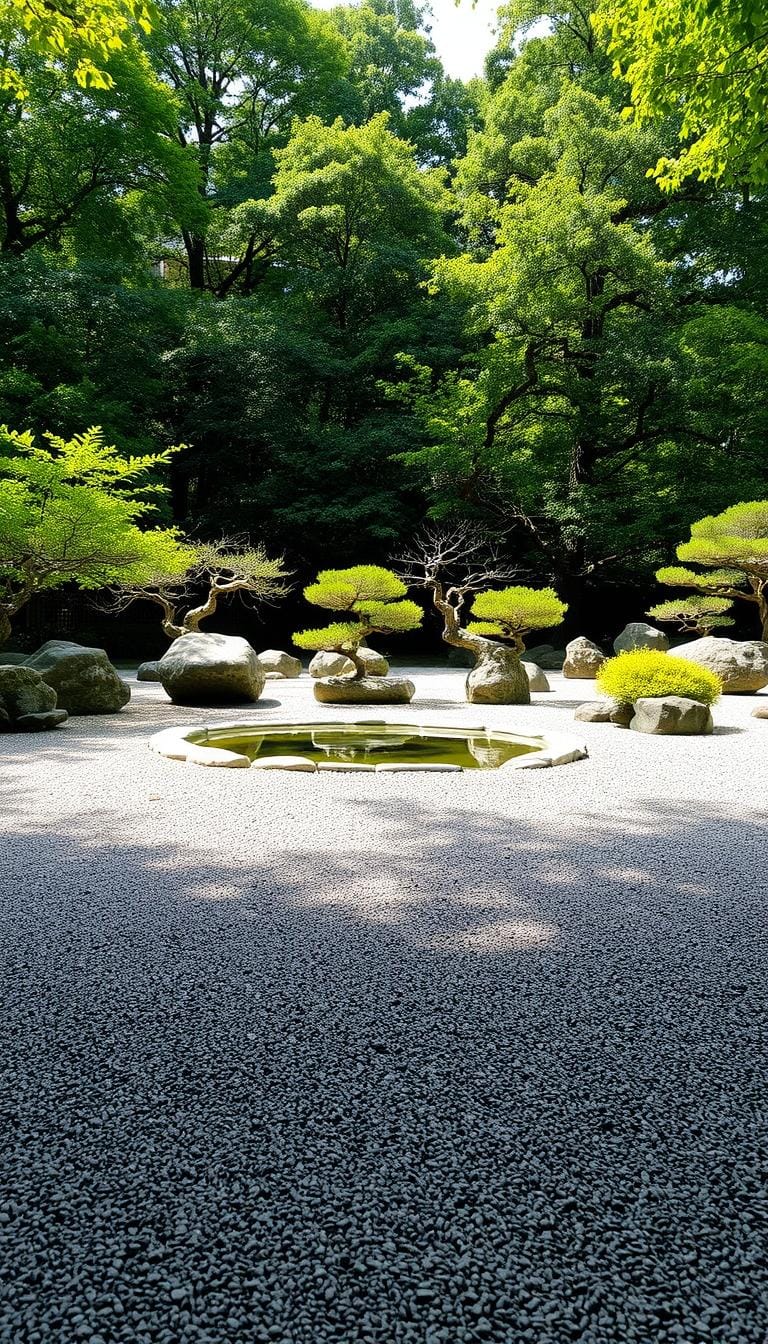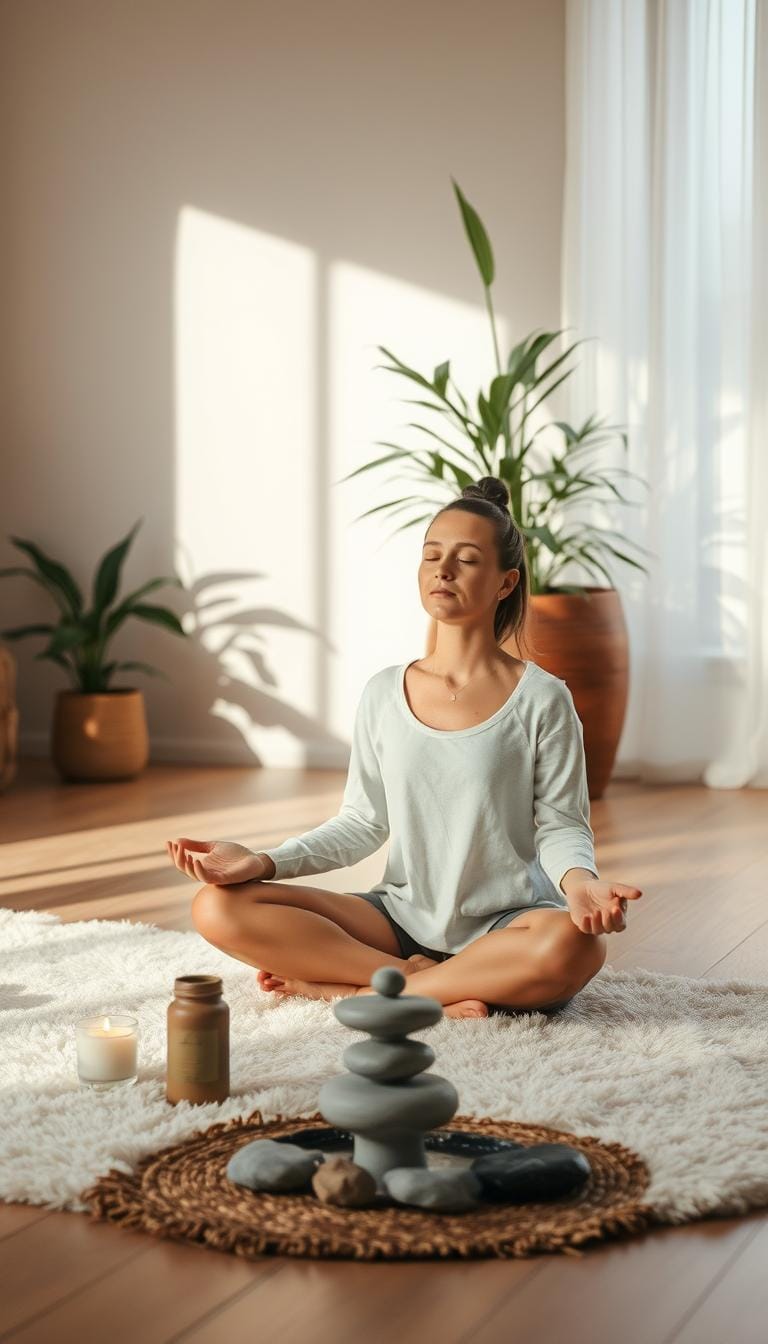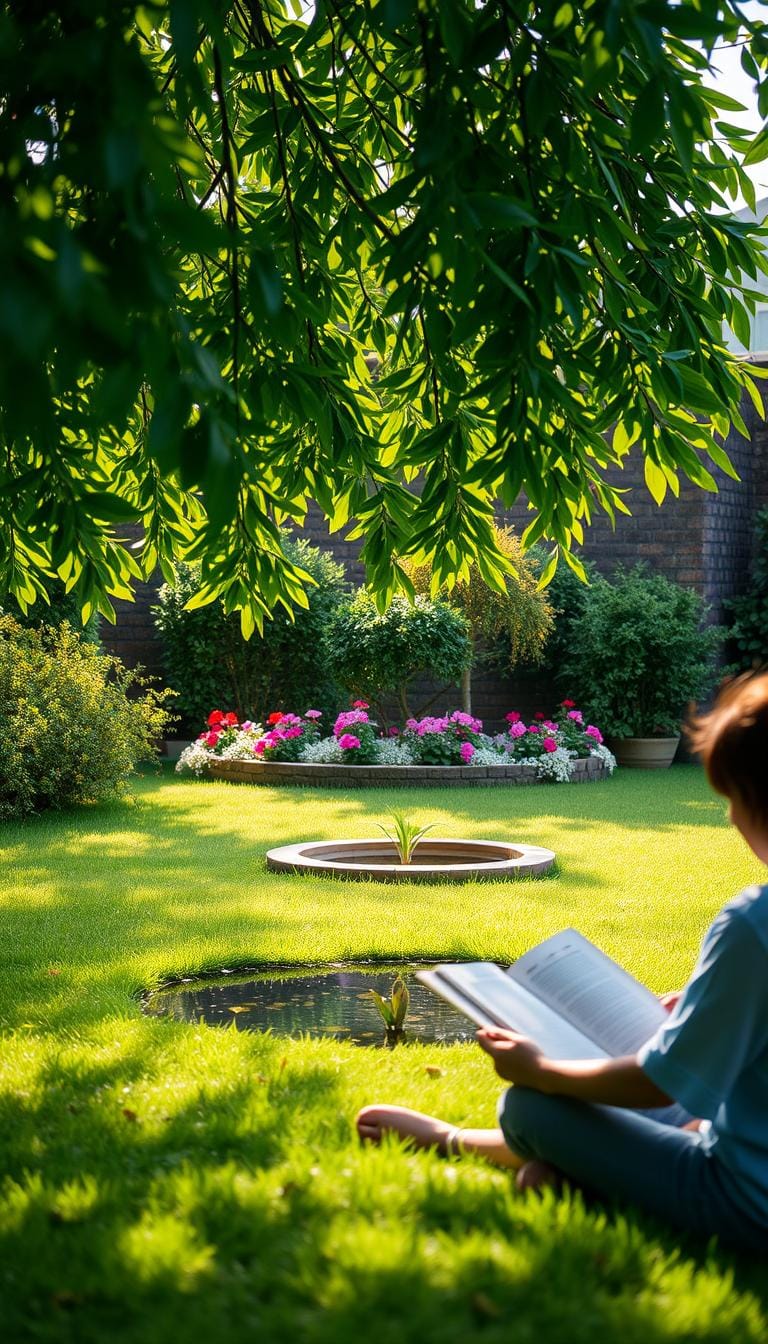Grounding Techniques in the Garden: How to Practice
Table of Contents
I found that using grounding techniques in the garden changed my daily life. My backyard became a peaceful place where nature and mindfulness meet. Today, I’ll show you three easy steps to find calm through these practices.
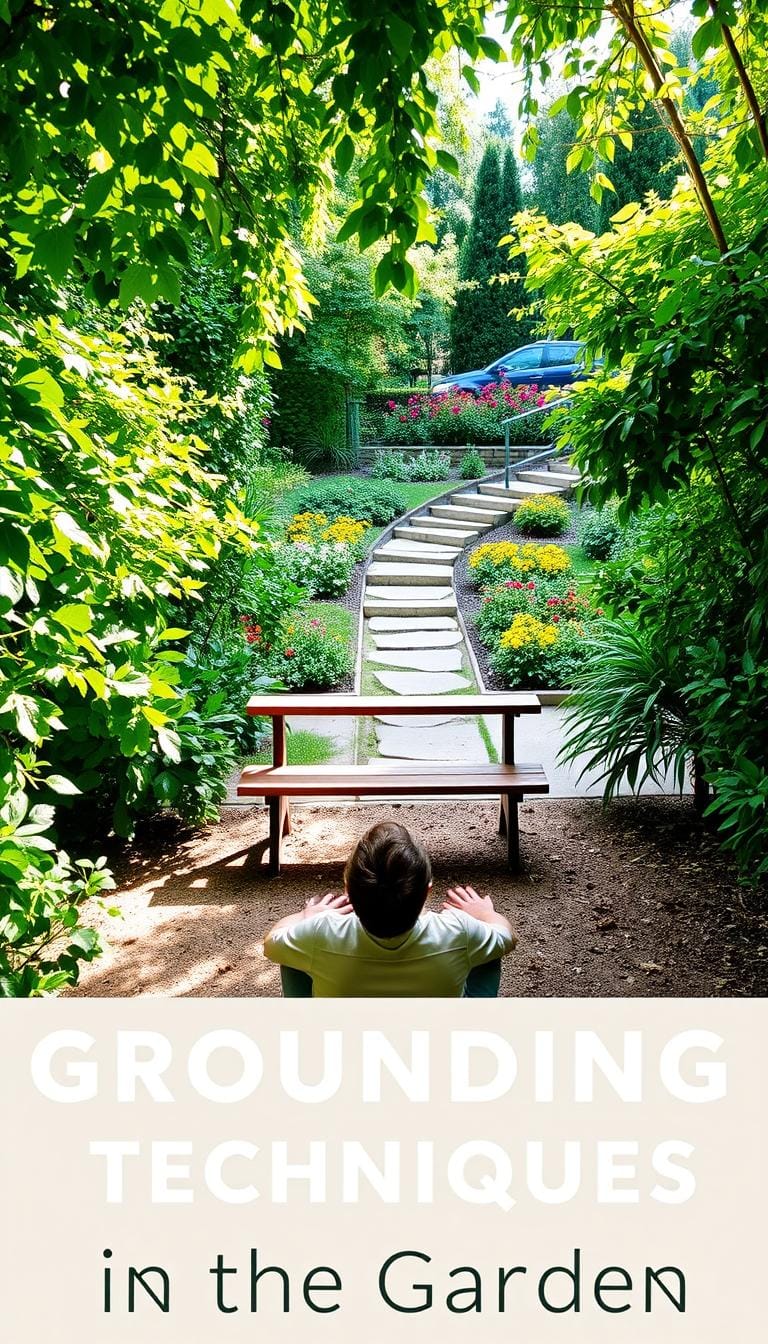
Connecting with the earth is simple. I started by paying attention to the soil beneath my feet and the breeze on my skin. Grounding techniques in the garden taught me to live in the moment. They turned my outdoor space into a place of calm.
Let’s explore how small moments in nature can make a big difference. This article will guide you on how to start grounding today. Together, we’ll discover the peace that comes from being present in the world around us.
Embracing Grounding Techniques in the Garden
Nature therapy has changed how I practice mindfulness. My garden is now a daily ritual. It connects us to the earth’s calming energy.
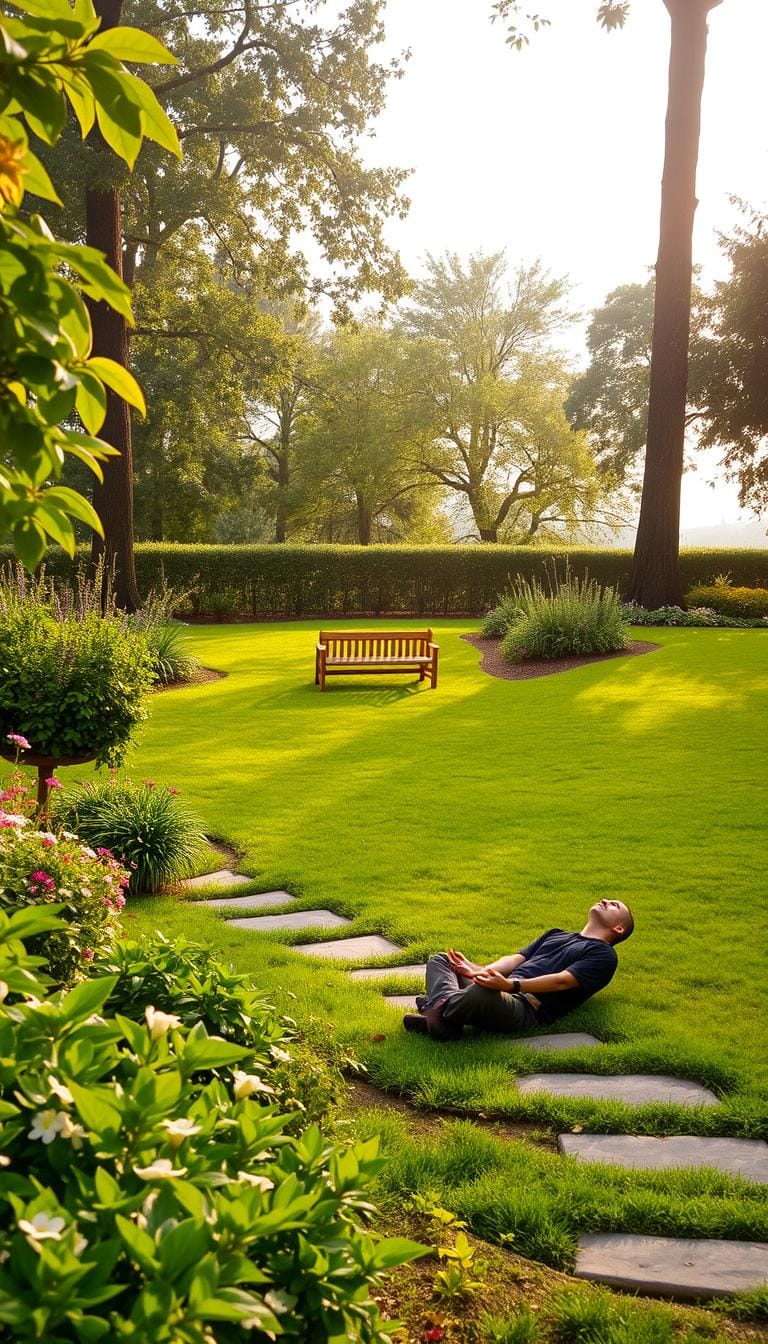
Understanding the Basics of Grounding
Grounding starts with being aware. Here’s how it works:
- Focus on sensory details: soil under bare feet, sunlight on skin
- Breathe deeply to sync with natural rhythms
- Observe plants to ground thoughts in the present
Why I Chose the Garden as My Sanctuary
City life overwhelmed me until I found my backyard. The garden’s quiet spaces offer:
| Benefit | Example |
|---|---|
| Stress relief | Watching bees pollinate flowers |
| Physical grounding | Watering plants with bare hands |
Implementing My Daily Practice
I follow these steps every morning:
- Wake up and step outside barefoot
- Observe one plant closely for 2 minutes
- Speak gratitude aloud to the garden
Even 10 minutes of this routine reduce anxiety. Nature therapy isn’t a chore—it’s a conversation with the earth.
The Journey to Mindfulness in My Garden
My journey into outdoor mindfulness practices started with simple moments. I’d sit on a garden bench, listen to bees buzz, or watch sunlight move through leaves. These small acts helped me connect more deeply with nature and myself.
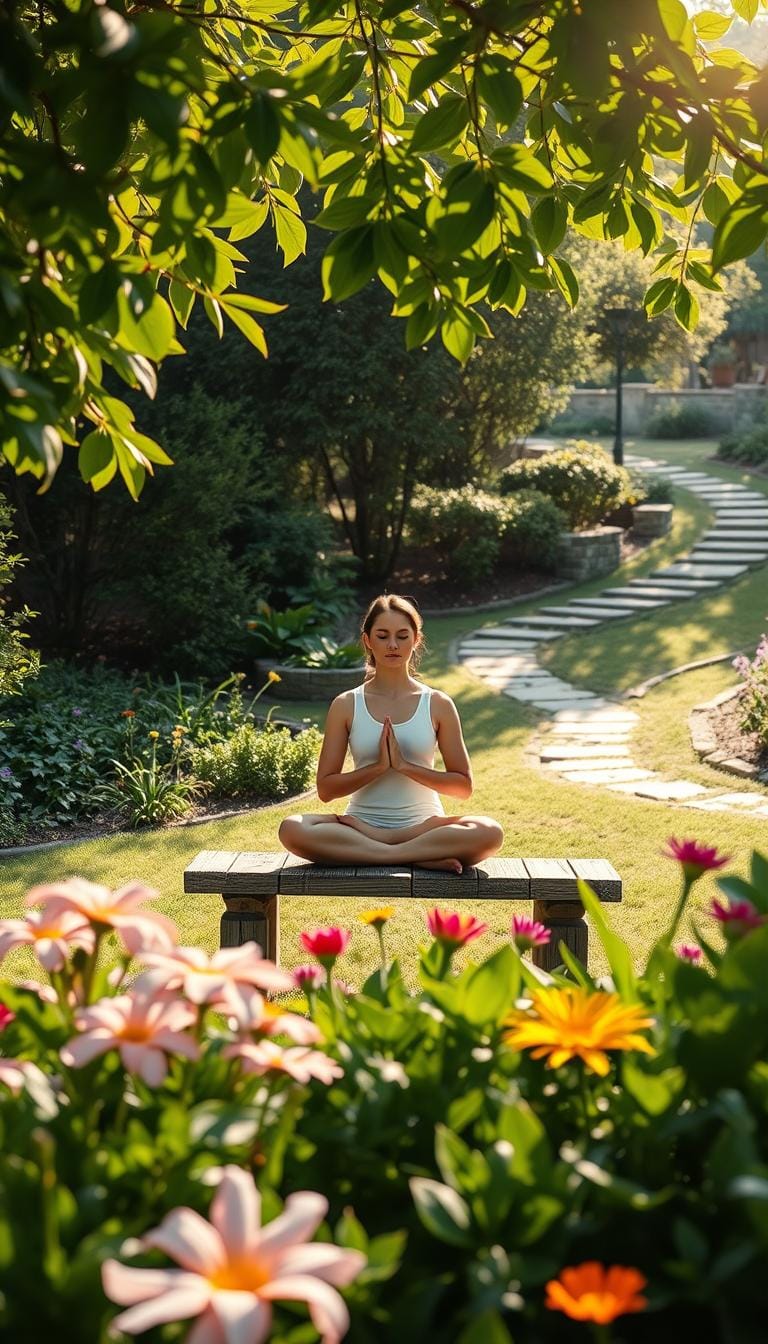
At first, distractions like loud neighbors or sudden rainstorms tested my resolve. But each challenge taught me something new. I learned to be flexible, moving indoors when it rained or using sounds as part of my practice.
“Mindfulness isn’t about perfection—it’s about presence,”
This mantra changed how I approached mindfulness.
What began as a passing interest became a daily ritual. I started journaling after my morning walks, recording how the garden reflected my growth. The smell of wet soil, the cool grass beneath my feet—these details grounded me. With time, I noticed my focus and calmness improve, showing that patience is worth it.
My garden has become a place of learning. Even when my mind strays, returning to these practices brings me back. It’s not just about the garden; it’s about embracing the journey. Start small: take a few deep breaths under a tree or plant a flower with intention. The journey is yours, but the goal is peace.
Nature Therapy: Connecting with Earth Through Outdoor Practices
Connecting with the earth has changed how I see my garden. Simple acts like walking barefoot or touching soil become mindful rituals. They help me stay present. Nature’s rhythms guide me, giving me a quiet space to reset and renew.
Experiencing Earth Connection Exercises
My daily earth connection exercises mix movement and calm. Here’s how I do them:
- Grounding Walk: I walk slowly, feeling each step connect with the ground.
- Sensory Exploration: I touch leaves, petals, and bark, noticing textures and smells.
- Earth Breathing: I sit with hands on the ground, breathing in sync with the earth.
Tapping into Garden Meditation Techniques
These techniques help me meditate with nature. Here are some effective ones:
| Technique | Practice | Benefits |
|---|---|---|
| Leaf Gazing | Hold a leaf, tracing veins while focusing on breath. | Quiets anxious thoughts, sharpens focus |
| Sound Mapping | Close eyes and name each natural sound heard (birds, wind, etc.). | Enhances sensory awareness, reduces mental clutter |
These practices are more than activities—they’re conversations with the earth. Each step, breath, and observation strengthens my connection with nature. Try them and feel the calm that comes from being mindful in your outdoor space.
Three Simple Steps to Reconnect with Nature
Starting small is key to building a lasting connection with nature. My journey began with these three steps. They make garden grounding exercises feel natural and accessible. Here’s how to begin:
- Step 1: Feel the Earth Underfoot
- Take off your shoes and walk slowly on grass or bare soil. Focus on the texture beneath your feet. This simple act grounds your body and calms your mind.
- Step 2: Engage Your Senses
- Pick a plant or tree. Touch its leaves, smell its scent, and note how sunlight filters through its branches. Sensory awareness turns ordinary moments into mindful rituals.
- Step 3: Breathe with Intention
- Sit quietly for five minutes. Inhale deeply, counting each breath. Let thoughts pass like clouds in the sky—this practice anchors you in the present.
| Step | Action | Benefit |
|---|---|---|
| 1 | Walking barefoot | Activates physical grounding |
| 2 | Sensory observation | Sharpens mindfulness |
| 3 | Intentional breathing | Reduces stress instantly |
These exercises don’t require special tools—just curiosity and consistency. I’ve found even 10 minutes daily creates space for peace. Let your garden become a classroom for calm.
Cultivating a Backyard Grounding Practice
Turning a part of your garden into a peaceful spot starts with a clear goal. I began by clearing a quiet area under an oak tree. The sunlight filtering through the leaves creates a natural roof. Here’s how I made a space that’s both useful and meaningful.
Creating a Meditation Corner in My Garden
I picked a simple bamboo bench and added a cushion for comfort. Wind chimes and a small water feature enhance the senses. These features help me stay focused during meditation.
Tools like a journal and seashells are nearby. They help me write down thoughts or use during deep breathing.
Designing a Holistic Garden Space
A thoughtful layout is key for meditation. Here’s what works well in my garden:
- Plants: Lavender for scent, sunflowers for color, and ferns for texture
- Paths: Gravel trails to crunch underfoot, grounding each step
- Lighting: Solar string lights to extend evening sessions
| Plant | Purpose | Benefits |
|---|---|---|
| Lavender | Calming scent | Reduces stress |
| Rosemary | Sharp aroma | Sharpens focus |
| Mint | Refreshes air | Promotes alertness |
“A garden designed for mindfulness becomes a teacher. It reminds us to observe, breathe, and let go.”
Every morning, I walk through my garden, noticing how each part invites calm. This space is more than decoration—it’s a daily renewal tool.
The Benefits of Mindfulness and Garden Meditation
Reconnecting with nature through mindfulness has changed my life. After months of meditation in my garden, I feel sharper and calmer. My body feels lighter, and I feel more grounded.
Science backs this up too. Studies show spending time outdoors boosts immunity and lowers anxiety.
“The earth has healing rhythms we can’t ignore.” —Dr. Mary Thompson, Nature Therapy Specialist
My journey has shown me three big benefits: clearer thinking, deeper relaxation, and a stronger bond with nature. Weeding my flowerbeds or sitting under the oak tree makes time slow down. My hands in soil, stress melts away.
Researchers at Harvard Medical School found these practices can reduce cortisol by up to 15%. My own blood pressure numbers have dropped after sessions.
Being in nature also boosts creativity. Last spring, I sketched garden designs during meditations, creating layouts I never thought of indoors. Birds chirping became my alarm clock, and the scent of rain-soaked earth signals calm.
These small joys add up. Studies in Environmental Health Perspectives link regular outdoor mindfulness to better sleep and sharper memory.
Every season, my garden practice changes. Winter’s quiet mornings contrast with summer’s buzzing blooms, yet both offer clarity. This isn’t just self-care—it’s a lifeline. By prioritizing this time, I’ve built resilience against daily pressures.
My story mirrors broader research: nature-based mindfulness isn’t a trend, it’s a proven path to balance.
Outdoor Mindfulness Practices for Every Season
My backyard activities stay exciting all year. I adapt to the seasons, whether it’s snow or sunshine. This way, mindfulness stays fresh for me.
Adapting Techniques to Weather Changes
I change my routines with the weather:
- Layer up for cold mornings and use cozy blankets for frosty meditation.
- Find shade during the hottest summer days.
- Use waterproof mats for rainy days, making puddles into paths for mindfulness.
Seasonal Garden Grounding Activities
Nature’s cycles inspire special practices. Here’s my seasonal guide:
| Season | Activity |
|---|---|
| Spring | Plant intention seeds while visualizing growth |
| Summer | Trace sunlight patterns with hands |
| Fall | Arrange autumn leaves into mindful mandalas |
| Winter | Sketch frost designs on windows |
Embracing seasonal changes keeps my backyard practice alive. Even snowfall becomes a moment to pause and breathe deeply.
Integrating Earth Connection Exercises into My Daily Routine
Adding holistic garden practices to my daily life changed everything. I start each day with a 10-minute walk in my garden. I feel the soil and smell the herbs. It helps me feel grounded before I start my day.
- Combine chores with mindfulness: Watering plants becomes a chance to focus on breath and touch.
- Set a 5-minute timer for mindful pauses: Use lunch breaks to sit under a tree or watch bees pollinate.
- End the day by touching leaves or smelling flowers: A calming transition between screen time and sleep.
“The Earth has music for those who listen.” – George Santayana
Being consistent is more important than being perfect. I’ve learned to fit these moments into my daily habits. For instance, pruning plants helps me stretch and clear my mind. Even on rainy days, watching raindrops on leaves is a calming sight.
These small actions make a big difference. They’ve helped me feel less stressed and more connected to nature. I hope others can find ways to incorporate holistic garden practices into their lives. It’s not about adding more to our day—it’s about noticing the beauty that’s already there.
Conclusion
My time in the garden taught me a lot about mindfulness. It showed how simple moments can become mindful practices. By connecting with the earth, I found peace even when life was busy.
Mindfulness in nature isn’t about being perfect. It’s about noticing the little things. Like sunlight through leaves or the feel of grass under your feet.
Begin with small steps. Spend five minutes walking barefoot or touching a tree. These small acts can add up over time. My garden showed me that healing spaces can be anywhere.
Every step outside brings us closer to joy and strength. It doesn’t matter if it’s your backyard, a park, or a window box. The key is to start.
Studies show that being in nature lowers stress and improves focus. Find a spot outside and make it your own. With time, your garden will remind you of the earth’s support for your mind.
Your well-being begins with the earth. Start by touching the soil with your hands.

